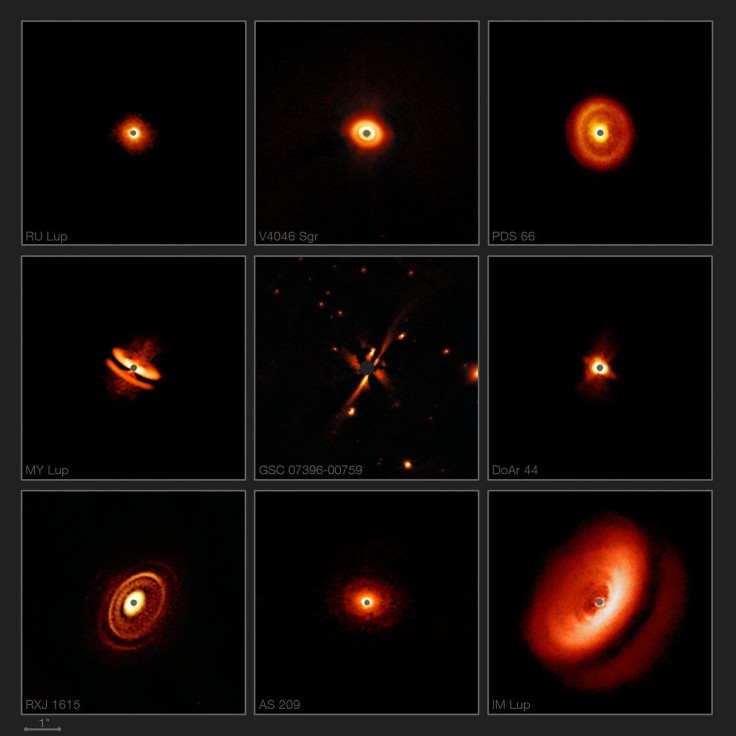Strange ‘Zoo’ Of Dusty Discs Captured Around Newly-Formed Stars 230-550 Light-Years Away

The European Space Observatory (ESO) shared Wednesday an incredible image showcasing weird discs of dust around a bunch of newly-formed stars sitting in the cosmos.
The image, taken by the observatory’s Very Large Telescope (VLT) in Chile, focuses on the backyard of stars belonging to a class called T Tauri. The members of this group shine with different intensity in the night sky and are just 10 million years old, which is relatively young by cosmic standards.
Due to the dazzling glow of these bodies, regions around them often become hard to observe. Plus, the distance to the objects — approximately 230 to 550 light years from Earth — further adds to the problem, making it even more difficult for astronomers to see what’s present in their proximity.
However, VLT’s instrument named SPHERE helped ESO researchers deal with the trouble. As part of the DARTTS-S or Discs Around T Tauri Stars with SPHERE survey, it allowed the team to suppress light from the stars and lay more focus on the areas surrounding them — more specifically the discs made from gas, dust, and planetesimals, which are the building blocks of planetary bodies.
As one can see in the image, the dusty objects vary in size and look very similar to bright and dark rings, with some even resembling hamburgers. Also, due to their orientation in the cosmos, some structures appear as face-on rings, while others look like edge-on ones.
These discs, as ESO said, could be witnessing a series of changes that may eventually lead to new planets. Essentially, they can be seen as a rough representation of what our solar system might have appeared during the early stages of its formation, more than four billion years ago.
Typically, scientists use SPHERE to spot and capture distant exoplanets, but the instrument can also function as an effective tool for capturing shots like these, something that astronomers can leverage to understand what type of discs lead to new, rocky planets similar to the Earth.
The need for understanding these structures is more than ever as in another observation, astronomers have spotted an oddball — an edge-on disc that appears much more evolved than it should be. Revolving around a red star called GSC 07396-00759, this disc is as old as other gas-rich ones surrounding other stars of the same system, but is much ahead of its time.
That said, the difference between the evolutionary timescales has further prompted the astronomers to know more about them including their characteristics, something they plan to achieve with future observations from VLT and other telescopes.
The images of T Tauri star survey will be published in a paper titled “Disks Around T Tauri Stars With SPHERE (DARTTS-S) I: SPHERE / IRDIS Polarimetric Imaging of 8 Prominent T Tauri Disks” in the Astrophysical Journal. Meanwhile, the discovery of the edge-on disc will be detailed in a paper titled “A new disk discovered with VLT/SPHERE around the M star GSC 07396-00759” in the journal Astronomy & Astrophysics.

© Copyright IBTimes 2024. All rights reserved.











